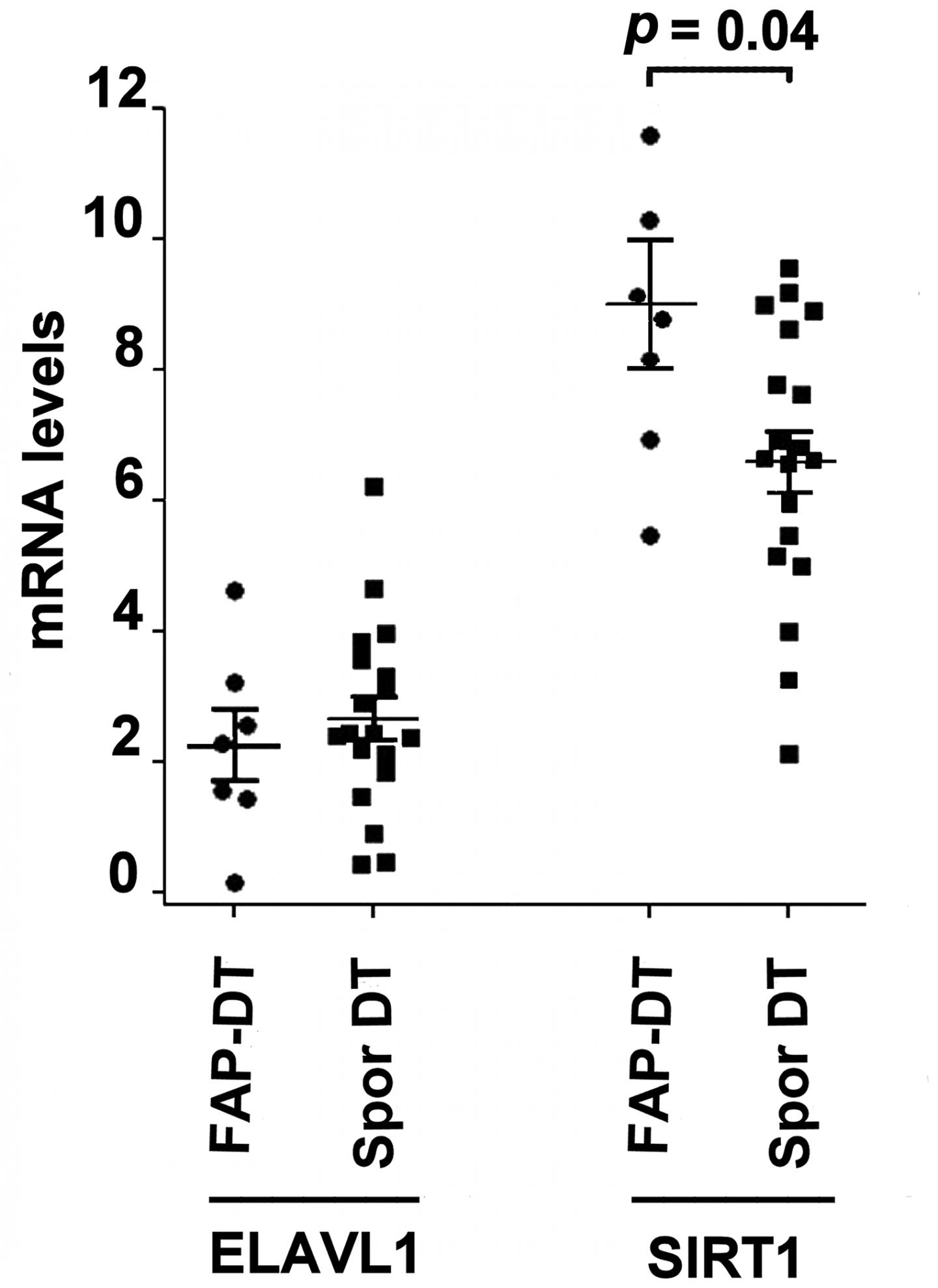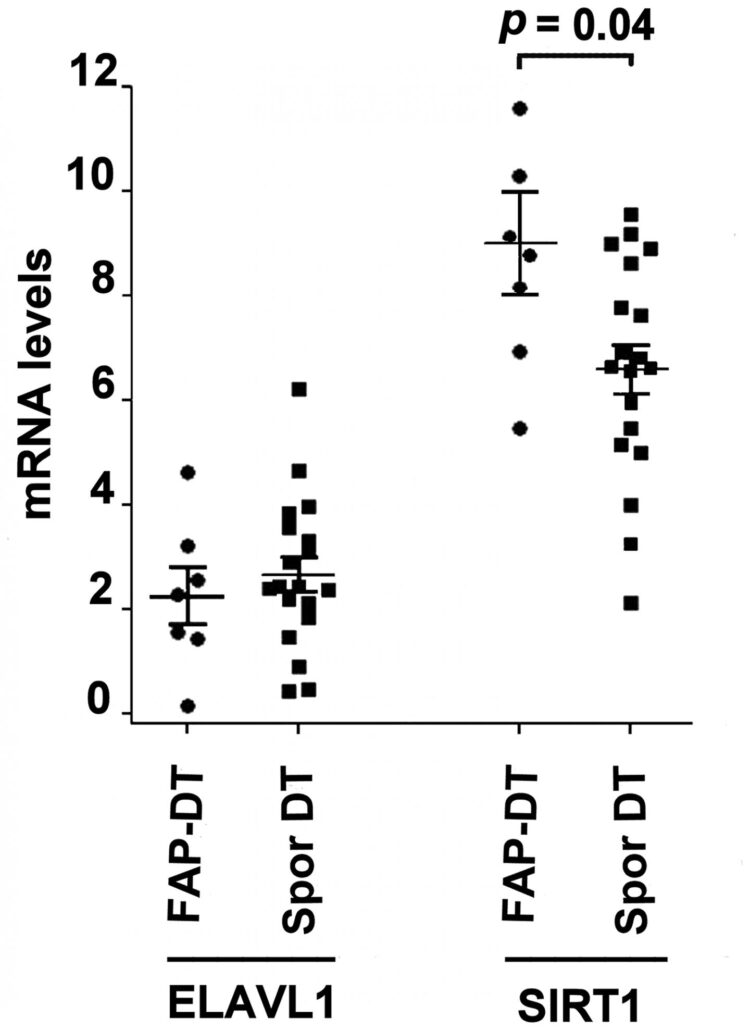Volume 11, Issue 26 of Oncotarget reported that in this study the authors studied the differences in mi RNA expression between sporadic and FAP-associated Desmoid tumors using microarray confirmed by quantitative PCR.

Credit: Correspondence to – Maria Teresa Rotelli – [email protected]
Volume 11, Issue 26 of Oncotarget reported that in this study the authors studied the differences in mi RNA expression between sporadic and FAP-associated Desmoid tumors using microarray confirmed by quantitative PCR.
Among them, mi R-133b levels were significantly lower in FAP-associated Desmoid tumors than in sporadic Desmoid tumors. The qPCR analysis showed that SIRT1 mRNA levels were significantly up-regulated in FAP-associated Desmoid tumor than in sporadic Desmoid tumor, whereas no differences in ELAVL1 expression was observed between these two Desmoid tumor types.
In addition, a negative correlation was observed between mi R-133b and SIRT1 in FAP-associated Desmoid tumors, but not in sporadic Desmoid tumors The mi R-133b-SIRT1-β-catenin axis may represent a novel mechanism underlying progression of FAP-associated Desmoid tumor.
Dr. Maria Teresa Rotelli from The Department of Emergency and Organ Transplantation at The University of Bari “Aldo Moro” in Bari Italy said, “Desmoid tumor (DT) is a rare, mesenchymal benign tumor, characterized by monoclonal, fibroblastic proliferation with local invasiveness, high risk of recurrence and even mortality, despite metastatization never occurs.“
The CNNTB1 mutations have been found in approximately 85% of DTs by routine Sanger sequencing, however, using a highly sensitive technique like next-generation sequencing, they may account for 90–95% of sporadic DT cases.
In these DTs, the germline mutations in the APC gene are responsible for the nuclear accumulation of β-catenin.
While the risk of death in sporadic DT is low, FAP-associated DTs are the most frequent cause of death in patients with FAP after the colon has prophylactically been removed.
It must be emphasized that the disruption of the Wnt signaling represents a common pathway in both DT forms, but sporadic and FAP-associated DTs are associated with mutually exclusive molecular alterations.
In a previous study, the authors have investigated a possible correlation between mi RNA expression and CTNNB1 mutations in sporadic DTs.
The Rotelli Research Team concluded in their Oncotarget Research Paper that the dialog between MSCs and tumor cells in FAP-associated DT tissue microenvironment could lead to β-catenin deacetylation driven by SIRT1, promoting Wnt/β-catenin signaling cascade in this tumor.
Although the number of specimens of FAP-associated DTs used in the present study was limited, it could be speculated that the β-catenin deacetylation process in FAP-associated DTs mimics the stabilization of that protein induced by CTNNB1 gene mutations occurring in sporadic DTs.
“It could be speculated that the β-catenin deacetylation process in FAP-associated DTs mimics the stabilization of that protein induced by CTNNB1 gene mutations occurring in sporadic DTs”
Therefore, in addition to APC gene mutations, the mi R-133b-SIRT1-β-catenin axis may represent a novel mechanism underlying the progression of FAP-associated DT. However, further studies are needed to fully understand the influence of mi R-133b-SIRT1 in the genesis or progression of FAP-associated DT.
Sign up for free Altmetric alerts about this article
DOI – https:/
Full text – https:/
Correspondence to – Maria Teresa Rotelli – [email protected]
Keywords –
desmoid tumor,
miRNA,
familial adenomatous polyposis,
B-catenin,
Wnt pathway
About Oncotarget
Oncotarget is a weekly, peer-reviewed, open access biomedical journal covering research on all aspects of oncology.
To learn more about Oncotarget, please visit https:/
SoundCloud – https:/
Facebook – https:/
Twitter – https:/
LinkedIn – https:/
Pinterest – https:/
Reddit – https:/
Oncotarget is published by Impact Journals, LLC please visit http://www.
Media Contact
@RYANJAMESJESSUP
[email protected]
Original Source
https:/
Related Journal Article
http://dx.





